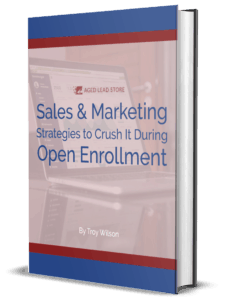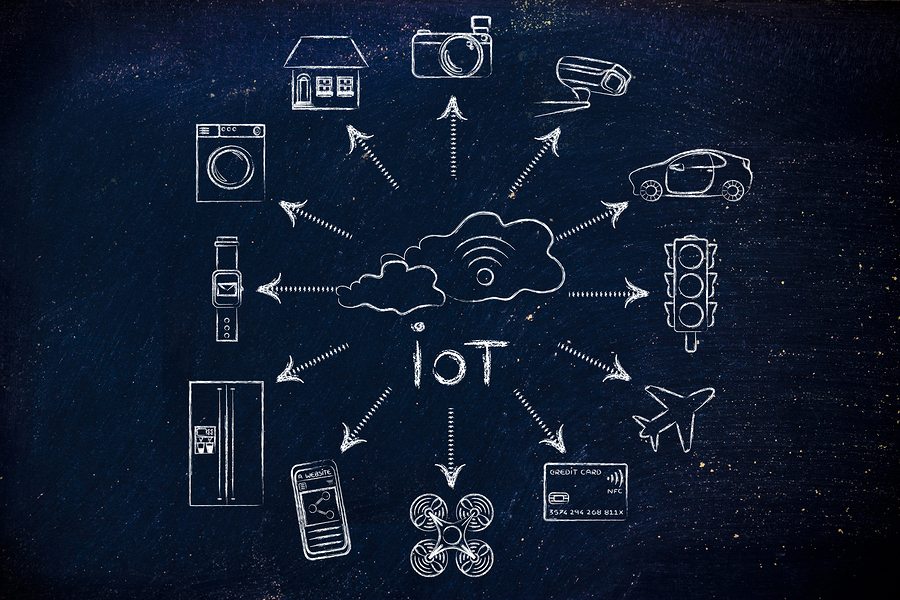 IoT — the so-called Internet of Things — is changing the world. Better health insurance and life insurance lead data have the potential to save money — for customers and carriers alike. It’s a smart move for insurers who are considering the future of their business and it could become important to your business down the line. Here’s how.
IoT — the so-called Internet of Things — is changing the world. Better health insurance and life insurance lead data have the potential to save money — for customers and carriers alike. It’s a smart move for insurers who are considering the future of their business and it could become important to your business down the line. Here’s how.
Just What Is IoT?
IoT (Internet of Things) is the concept of a fully connected world, where anything with an on/off switch can be connected to the internet. We’re not just talking about laptops and smartphones here, but also your refrigerator, coffee pot, thermostat, car, and of course, wearable items, like smart watches, fitness trackers, and so on. The idea is to connect not only people to machines but machines to other machines.
Confused? You wouldn’t be the first. Here’s a description of IoT by Forbes:
Say for example you are on your way to a meeting; your car could have access to your calendar and already know the best route to take. If the traffic is heavy, your car might send a text to the other party notifying them that you will be late. What if your alarm clock wakes up you at 6 a.m. and then notifies your coffee maker to start brewing coffee for you? What if your office equipment knew when it was running low on supplies and automatically re-ordered more? What if the wearable device you used in the workplace could tell you when and where you were most active and productive and shared that information with other devices that you used while working?
Ready-to-Close Aged Health Insurance Leads
That last part — about wearable tech — is where insurance comes in.

Get our latest Sales eBook
25 pages of sales and marketing tips for open enrollment. It’s FREE and updated annually with the most current marketing trends.
IoT and Life Insurance
Pricing premiums accurately is a must for insurers, but it’s no easy task. It takes actuarial data on a massive scale to properly conduct risk assessments and model insurance payouts, revenue, profits, and losses. IoT promises to help insurers come up with superior risk assessments, according to Business Insider. These insurers can then, in turn, create better models and draw in new customers with wider portfolio offerings.
Prospective aged leads and existing customers will play their part by sharing data from their wearable devices, including items like FitBit or Nike+ FuelBand. The data will give a unique snapshot of the health of individual life insurance customers, but it can also be used in aggregate and compared with the fitness level of larger populations. Companies will be able to save money by pricing policies more precisely and improving the modeling of risks and payouts. Customers who are in great health will save money, too, thanks to their lowered risk profile.
IoT and Health Insurance
Health insurance is another place where IoT is a growing trend. Much like life insurers, health insurers can use wearable fitness devices to track client health. Already, some group health insurers have started rewards programs where company employees are rewarded for healthy lifestyle choices, such as staying active, sleeping well, and so on.
There are other applications in the works. Automated blood analysis could head off heart attacks and fitness tracker data and GPS data could be used to keep tabs on patients undergoing a series of treatments — such as a disability claimant attending rehabilitation or physical therapy sessions. The more diligently a patient sticks to such a program’s schedule, the faster they’ll get better. That could save the insurer money, the customer money, and the wider pool money as well.
IoT and the Future
Forbes says that IoT will be exploding in the next few years. There could be anywhere from 20 billion to 100 billion devices connected by 2020. Business Insider says that about 14% of insurance executives surveyed say they have launched IoT insurance products that incorporate health and fitness monitors or other wearables. Another 23% are in a test or pilot program phase.
For leads, the impact can be pretty big. John Hancock already has a program where life insurance customers can get up to a 15% discount by sharing Apple Watch activity data through special apps. Other firms will likely follow.
IoT and You
For agents, working with aged leads, IoT may mean the opportunity to offer a wider portfolio of more tailored products to your customers. You may have success with younger, tech-savvy customers who are comfortable with smart devices and data sharing. And you may even be able to save your customers some money if they fall into certain low-risk groups.
Looking for new leads for your life insurance or health insurance business? Fill up your pipeline with a fresh supply of high-quality aged insurance leads from The Aged Lead Store. You’ll find thousands of sortable aged leads, ready to boost your sales, whether your business is auto, life, health, health supplement or homeowners insurance, annuities, auto warranty coverage, mortgage refinance, or solar installation.













